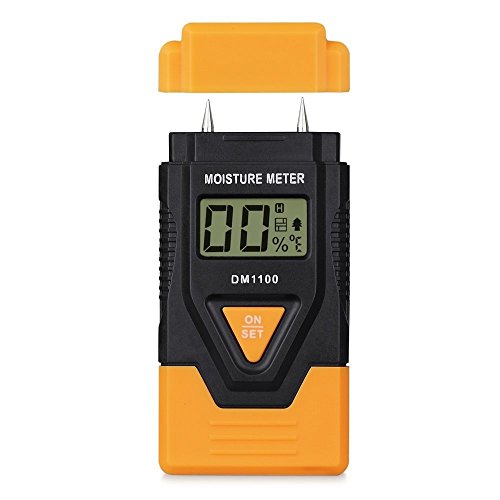
In modern industrial environments, efficiency and reliability are paramount. Whether in manufacturing, power generation, food processing, or pharmaceuticals, maintaining optimal conditions for production processes directly affects quality, cost, and sustainability. One often overlooked yet essential factor in achieving this efficiency is moisture control, specifically, the accurate measurement of water vapor in gases and compressed air systems.
This is where dew point meters play a vital role. These instruments, designed to measure the temperature at which moisture condenses from a gas into liquid, provide invaluable insight into humidity and dryness levels in industrial processes. By precisely monitoring moisture content, dew point help companies enhance productivity, minimize equipment wear, ensure product quality, and reduce energy consumption.
Understanding the Dew Point and Its Importance
The dew point is the temperature at which air or gas becomes saturated with moisture and condensation begins to form. In industrial systems that rely on compressed air, natural gas, or other gases, excess moisture can lead to a wide range of problems — corrosion, contamination, freezing, product degradation, and even system failure.
For example, in a compressed air system, water vapor can condense into liquid form when the air cools, damaging tools, clogging valves, and contaminating end products. Similarly, in natural gas pipelines or petrochemical plants, condensation can cause blockages and corrosion that lead to safety hazards and costly downtime.
A dew point meter continuously monitors this moisture threshold, ensuring that gases remain within safe and efficient operating limits. By providing real-time dew point readings, these instruments allow engineers to take corrective action before condensation occurs — a simple step that can yield significant operational benefits.
Types of Dew Point Meters and Their Applications
There are several types of dew point meters, each tailored for specific industrial conditions and accuracy requirements:
Chilled Mirror Hygrometers – These are high-precision instruments that determine the dew point by cooling a mirror until condensation forms on its surface. They are often used as reference devices in calibration laboratories or in applications requiring exceptional accuracy.
Capacitive Sensors – Commonly used in process industries, these sensors measure changes in electrical capacitance caused by varying humidity levels. They are rugged, reliable, and ideal for continuous monitoring in compressed air or gas drying systems.
Aluminum Oxide Sensors – These sensors detect moisture by measuring changes in the electrical characteristics of an aluminum oxide layer. They are widely used in petrochemical, semiconductor, and power generation industries due to their durability and fast response times.
Polymer Sensors – These use hygroscopic polymer materials that absorb moisture and alter electrical properties proportionally. They are suitable for lower-cost or general-purpose monitoring applications.
Each technology has its own strengths, but all share a common goal: to provide accurate, real-time data that allows operators to maintain optimal moisture control.
Enhancing Process Efficiency Through Moisture Control
The key contribution of dew point meters lies in their ability to improve industrial process efficiency across multiple dimensions:
1. Energy Efficiency and Cost Reduction
Moisture control directly influences energy consumption in drying and compressed air systems. If a process is overdried — meaning the air is kept drier than necessary — energy is wasted in removing moisture that poses no threat to the operation. Conversely, underdrying can lead to product spoilage or equipment damage.
By providing precise dew point data, operators can optimize drying cycles, reducing unnecessary energy use while maintaining product and equipment safety. In large-scale systems, this optimization can translate into substantial cost savings over time.
2. Extended Equipment Lifespan
Moisture is one of the leading causes of equipment wear and corrosion. In pneumatic systems, for instance, water vapor can degrade lubricants, rust metal parts, and reduce overall efficiency. By maintaining a consistent and monitored dew point, operators can prevent moisture-related corrosion and mechanical damage, thereby extending the service life of expensive machinery and reducing maintenance downtime.
3. Improved Product Quality
Many manufacturing processes require extremely dry environments to ensure consistent product quality. In the pharmaceutical industry, for example, even small variations in humidity can affect the stability and shelf life of medications. In electronics manufacturing, excess moisture can cause oxidation and short circuits during production.
Dew point help maintain strict humidity controls, ensuring that every batch or component meets exact specifications. The result is higher product reliability, reduced waste, and stronger compliance with industry standards.
4. Process Stability and Safety
In industries such as petrochemicals or natural gas processing, water condensation can create dangerous conditions, including hydrate formation or corrosion that leads to leaks. Continuous dew point monitoring ensures that gases remain dry enough to prevent these risks, safeguarding both personnel and infrastructure.
Furthermore, in food and beverage manufacturing, proper dew point control prevents microbial growth and spoilage, ensuring safe and hygienic production environments.
5. Data-Driven Process Optimization
Modern meters are often integrated with digital control systems, enabling remote monitoring and data logging. This integration allows plant operators to analyze long-term trends, detect inefficiencies, and schedule predictive maintenance before failures occur.
In the age of Industry 4.0, this kind of data-driven insight transforms dew point measurement from a simple monitoring function into a strategic efficiency tool.
Real-World Applications Across Industries
The benefits of dew point monitoring extend across a wide spectrum of industrial sectors:
Compressed Air Systems: Ensuring air dryness prevents corrosion in pipelines, protects pneumatic tools, and maintains product quality in packaging and assembly operations.
Petrochemical and Natural Gas: Monitoring the dew point prevents condensation that can cause blockages or corrosion in pipelines and storage tanks.
Power Generation: Gas turbines and switchgear require extremely dry air to prevent electrical faults and ensure operational reliability.
Pharmaceuticals and Biotechnology: Dew point control ensures the stability of hygroscopic materials and prevents contamination during drug formulation and packaging.
Food and Beverage Processing: Maintaining proper humidity prevents mold growth and ensures consistent texture and flavor in products.
Semiconductor Manufacturing: Cleanroom environments depend on precise dew point control to prevent microscopic moisture-related defects in chips and wafers.
The Future of Dew Point Measurement Technology
Advancements in sensor technology and digital communication are driving the next generation of dew point meters. Today’s instruments offer faster response times, lower detection limits, and enhanced calibration stability. Many are also equipped with smart connectivity, allowing integration with supervisory control and data acquisition (SCADA) systems, cloud platforms, and predictive analytics tools.
Additionally, portable meters are becoming more compact and user-friendly, enabling on-site testing and troubleshooting without complex setup. These improvements are helping industries move toward predictive maintenance models — where real-time dew point monitoring identifies potential issues before they impact operations.
In the coming years, the combination of AI-driven analytics, wireless sensor networks, and IoT-enabled measurement systems will make moisture control even more efficient and automated, unlocking further gains in industrial productivity.
Conclusion
In any process where moisture poses a risk to quality, safety, or performance, dew point meters serve as a cornerstone of operational efficiency. By accurately measuring and controlling the dew point, industries can achieve significant improvements in energy efficiency, equipment reliability, product consistency, and overall process stability.
As technology continues to evolve, these instruments will only become more intelligent, connected, and indispensable. For manufacturers and engineers seeking to maximize efficiency and minimize risk, investing in precise dew point measurement is not just a matter of compliance — it’s a strategic decision that delivers long-term value across the entire production lifecycle.




